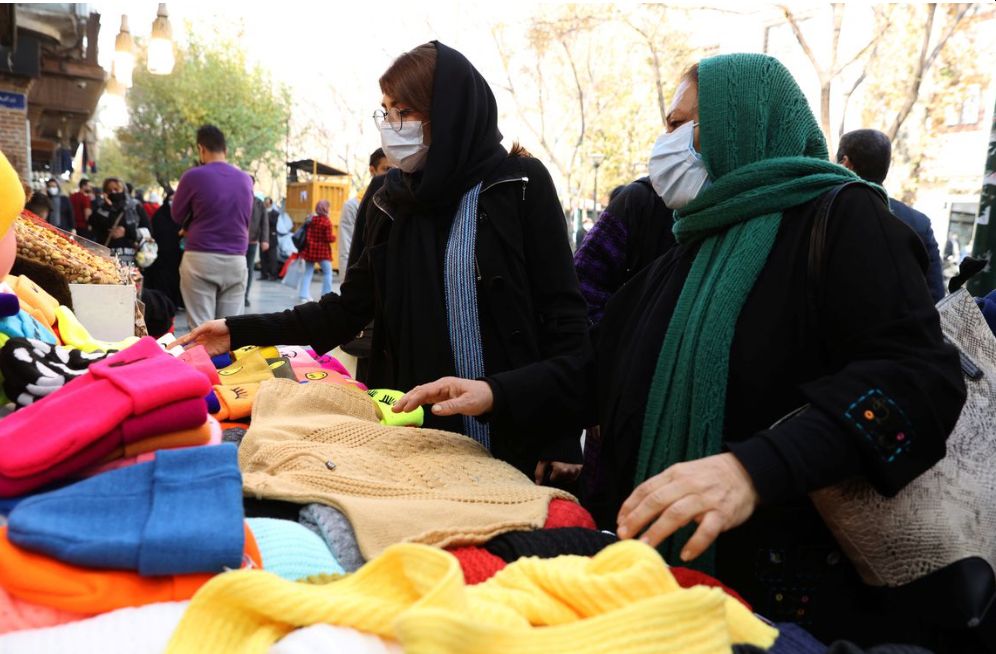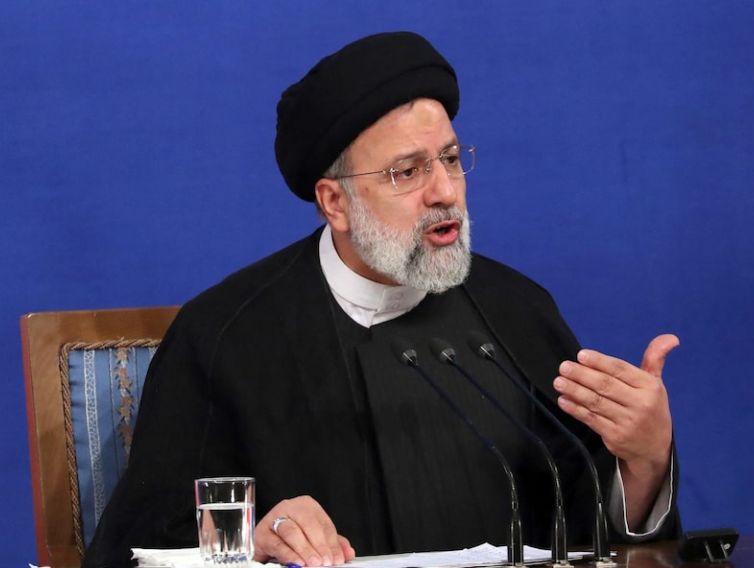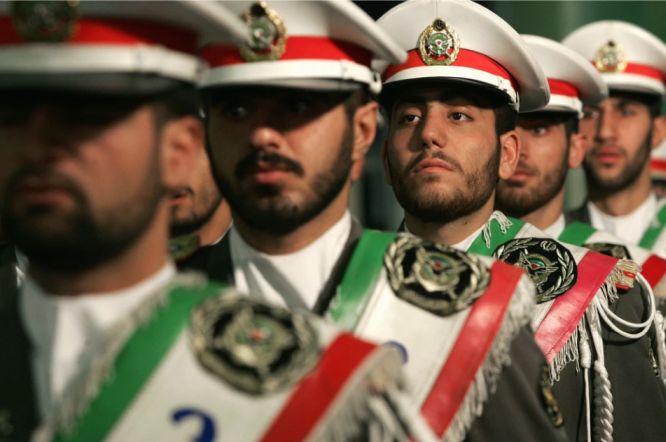By Eric Vandenbroeck
and co-workers
The End Of The Islamic Republic As We
Know It Part One
While Iran (while breaching
its nuclear deal) is meddling
in the Ukraine war by sending trainers to help Russia handle problems with
drones purchased from Tehran where at his home front, according to Arab
News 20 (Reuters says around
23) children were reportedly killed during the
current protests; schools have been raided and pupils sent to
“psychological centers.” While doctors risked
it all to treat the protesters.
Iran is undergoing an
identity crisis. For almost a month, in streets and neighborhoods across the
country, people have rebelled against the Islamic Republic, calling for the death of its supreme
leader and an end to the theocratic regime’s 43 years of rule.
While initially not yet clear, today's Iran protests look
like the death knell to the Islamic Republic. The killing in police
custody of Mahsa Amini, a
22-year-old woman arrested for wearing the hijab incorrectly, has unleashed a
wave of angry and bloody demonstrations, boycotts, work stoppages, and wildcat
strikes that have exhausted the country’s security forces and spread to more
than 100 cities. The government has endured major protests, notably in 2009,
2017, and
2019, but these demonstrations differ. They embody the anger that Iranian
women and young Iranians feel toward a regime that seeks to stifle their
dearest desires. And they promise
to upend Iran’s establishment.

Since Iran’s 1978–79
revolution, the Islamic Republic has relegated women to second-class status
under sharia and the strictures of the Iranian constitution. But women,
especially young women, have had enough. They are now volubly rejecting the
requirement to wear hijabs and the social order that the Islamic Republic has
sought to impose on the country. Some women have burned their headscarves, an
act that two months ago was punishable by a lashing and a jail sentence but now
is not that rare an act in Iranian cities.
It is said that
revolutions devour their children, but in Iran, the grandchildren are
devouring the revolution. Iran’s clerics have responded to this
existential challenge with brute force, but violence and repression will not
snuff out the will of a nation so roused against its government.
Pillars Of The State
The Islamic Republic
rests on three ideological pillars: vehement opposition to the United States,
obdurate antagonism toward Israel, and institutional misogyny, especially in
the form of compulsory hijab rules requiring women to wear coverings in public
spaces. If any of these pillars weakens, the whole edifice of the Islamic Republic
falls. Tehran needs enmity with the United States and Israel to keep
the revolutionary flame alive. Anti-Americanism is seared into the Islamic
Republic’s identity. The enforcement of the dress code for women is
also a redline for clerical leadership. The compulsory wearing of the hijab is
to the Islamic Republic what the Berlin Wall was to communism, a symbol not
just of power and endurance but of vulnerability. The Berlin Wall was also an
admission of the fragility of the communist system, which depended on
exercising significant control over people.
Similarly, compulsory
hijab laws reflect the Islamic Republic’s fear of allowing its citizens
personal freedoms and its intent to control society by treating women as
if they were pieces of property to be corralled and protected. Once
the Berlin Wall fell, communism was doomed. The same fate awaits the Islamic
Republic once women can throw off their veils and participate in social life as
men do.
The Islamic Republic
began to enforce dress codes on women soon after the. The architects of
the revolutionary state wanted to control how women dressed in public,
banning tight-fitting clothes, bright colors, and makeup and insisting that
women cover their hair. Under the country’s compulsory veiling laws, women and
girls as young as seven are forced to wear a headscarf. Women disobey face
harsh punishment and are often charged with “inciting corruption and
prostitution.” The state has given several women, including the activist Yasaman Aryani and her
mother, Monireh Arabshahi,
jail sentences—some as long as 16 years—for defying these laws. But
hundreds more have paid and continue to pay that price for seeking the freedom
to choose how to dress.
Iranian women have
never quietly accepted the imposition of the headscarf. In 2014 alone,
according to government figures, Iran’s so-called morality police (the
detachment of Iranian law enforcement charged with upholding Islamic moral
standards) warned, fined, or arrested 3.6 million women for “inappropriate
dress.” Data for subsequent years were not publicly released, probably because
it would reveal the extent to which Iranian women are fed up with restrictions
on their dress. Iran’s clerics could sense the rising tide against the hijab
even before Amini's death. In early July 2022, the
morality police warned women that they would be arrested if they did not comply
with the hijab requirement. On July 12, the authorities held the annual
celebration marking the National
Day of Hijab and Chastity, which involved public rallies by
pro-government loyalists in large stadiums to encourage wearing the
hijab. But simultaneously, many women challenged the regime, using the
hashtag #no2Hijab on
social media and
posting videos and photographs of women not wearing the hijab in public
spaces. The regime arrested and beat up some of these dissenters and forced
them to make apologies on national TV.

Iranian officials
have used footage from surveillance cameras in public places such as subways
and motorways to help identify and fine women who flout the mandatory hijab
rule. The headquarters chief for Enjoining Right and Forbidding Evil, a
government body responsible for enforcing Islamist laws, warned in August that women who post pictures of
themselves without a hijab on the Internet would be deprived of some social
rights for six months to one year. Authorities have prevented women whom they
perceive not to be in full compliance with the dress code from entering
government offices and banks and from riding on public transportation.
Iran Unveiled
Such measures have
not stopped Iranian women from resisting the hijab. For the past decade, the
authorities have had to deal with greater online militancy by Iranian
women. With traditional media entirely controlled by the state, Iranians
have flocked to social media, especially platforms such as Facebook, Instagram,
Telegram, Twitter, and WhatsApp, to push back against the veil. For
instance, millions follow the social media campaign “My Stealthy Freedom,”
which seeks to get rid of compulsory hijab laws in Iran, and its various
initiatives, such as White Wednesdays (encouraging women to wear white scarves
on Wednesdays as a sign of dissent), Walking Unveiled (when women unveil
themselves in public), Men in Hijab (when men post pictures of themselves
wearing hijab). My Camera Is My Weapon (in which women share mobile phone
footage of abusive men or interactions with the morality police), all designed
to enable women to challenge the onerous dress code. The campaigns have
empowered women to take off their hijabs and defy the regime's strictures.
Using their mobile phones, women have shared many videos of morality police
harassment via “My Stealthy Freedom” that the government introduced a 2019 law
that made sending videos to the campaign an offense punishable by ten years of
imprisonment.

For the regime,
trying to control a young generation that wants social change and stronger
connections to the West is an uphill battle. Despite widespread censorship,
Iran’s Internet penetration rate (the percentage of the country’s population
that have access to the Internet) at the beginning of 2022 was 84 percent, a high mark. Iran has over 130 million mobile
subscriptions, which gives the country 84 million people a staggering mobile
phone penetration rate of 161 percent, with the average person having more
than one phone. The reported number of Internet users in 2022 increased to 72 million from 58 million in 2020, and the actual figure could be even higher.
Although the regime
has banned many websites and social media platforms, Iranians have found ways
to bypass censorship through virtual private networks or VPNs. According
to a member of the Iranian parliament who was lamenting how strict censorship
laws force Iranians to circumvent them, almost 80 percent of Iranians with Internet access have installed
anti-filter and VPN software to evade censorship.
Young Iranians want
the same freedoms and choices available to youth in the West. The Islamic
Republic cannot bend to these desires without undermining its authority, so it
has contended violently with this wave of protests. Authorities have killed
dozens of women, including 16-year-olds
Sarina Esmailzadeh in Gohardasht
and Nika Shakarami in Tehran.

The Nuclear Problem
The protests in Iran
put the West in an awkward. For example, the Biden administration has tried
hard to restore some version of the nuclear deal that the Trump administration
jettisoned. But this deal cannot be salvaged. The Islamic Republic is not an
honest broker: it has a track record of cheating (failing, for instance, in May to answer
International Atomic Energy Agency probes about unexplained traces of uranium
at three undeclared sites), and it has yet to fully come clean on its past attempts to develop a nuclear program with potential
military uses. And worse, should Biden manage to reach some compromise
with Iran, a new deal would fly in the face of his forceful condemnation of the
regime’s crackdown on protesters. Any deal would likely release billions of
dollars to the Iranian government, funding the same authorities viciously
attacking citizens in the streets.
Yet the US
administration has made the contest between autocracy and democracy a central
theme of its foreign policy. Iran should be part of that policy. It is time to
encourage the Iranian people to fulfill their democratic aspirations.
Beyond rhetoric, the
U.S. government and it's western European allies
involved in the nuclear deal should halt negotiations with the Islamic Republic
as long as Iranian authorities are suppressing the protests and throttling the
Internet. The United States should introduce respect for human rights as a
condition for continuing any negotiations. Congress should also refuse to
release frozen Iranian funds in foreign banks, conditioning doing so on
tangible improvement in Iran’s treatment of its citizens.
At the same time, the
United States could work with Starlink, the satellite
Internet company, and other enterprises with similar capabilities to help
provide Iranians with a free and secure Internet. The U.S. government should
create a unique method exempt from U.S. sanctions (perhaps by moving funds
through banks in Erbil in northern Iraq and the Persian Gulf and leaning on the
trust-based hawala system of money transfers that makes
tracking payments difficult for states) to disburse frozen Iranian funds to
striking workers inside Iran. Such support could embolden the strikes that have
spread in parts of Iran and lead to a convergence of labor and political
movements that would represent a significant threat to the Islamic Republic.
Iranian Revolutionary Guards:

Senior members of the
Biden administration Could hold private and public meetings with members of the
Iranian diaspora, Iranian dissidents, and Iranian opposition groups to better
understand the actual situation inside Iran. Congress should also get involved
and hold public hearings, both on Iran's protests and how the regime threatens
U.S. citizens, including members of the Iranian diaspora, to raise awareness of
these challenges.
From Theocracy To Democracy
Some in Washington fear
that if the United States overtly backs the protesters, the Iranian regime will
more easily be able to shut them down, painting them as foreign or U.S. agents.
In 2009, the Obama administration followed this line of reasoning and refrained
from supporting the protests then roiling the country; Obama even made
overtures to the clerical leadership just days after the protests began.
Obama’s restraint did not make any difference: the regime still labeled the
demonstrators as U.S. stooges intent on destabilizing Iran and throwing the
country into chaos.
Since then, Iranian
protesters have taken to chanting, “They tell lies when they say it’s America.
Our enemy is right here.” That should be of interest to policymakers. Although
the translation doesn’t do the chant justice, the message is clear: Iranians
see the clerical regime as their real enemy. If the United States were to
revive the nuclear deal with Iran at this moment, it would be meddling in the
country’s internal affairs. It would strengthen an unpopular regime that is
savagely crushing peaceful protests. The United States would stand on the wrong
side of history by propping up the Islamic Republic.
With women leading
the way, Iran’s transformation from a theocracy to a democracy will be
remarkable. It will not happen overnight. But in their bravery, the Iranian
people have voiced one central request to Western governments: Don’t save the
Islamic Republic.
For updates click hompage here